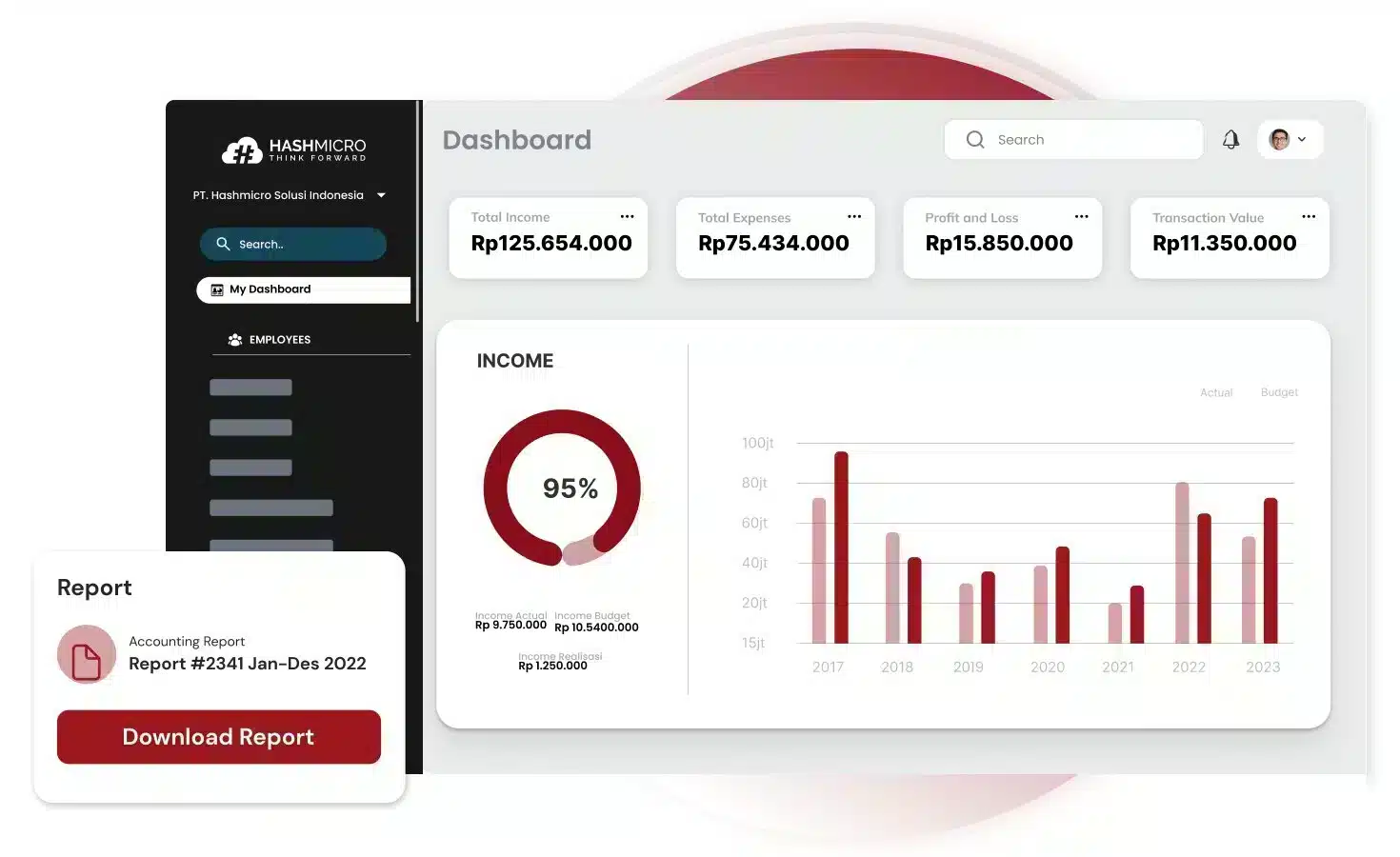Projects that exceed their planned budgets often become more than just accounting concerns. They can disrupt operations, delay progress, and negatively impact a company’s overall financial performance. This issue is known as a cost overrun, which refers to the situation where actual project costs surpass the initial estimates.
In a business context, especially at the managerial and executive level, cost overruns can lead to missed targets, diminished profitability, and a loss of stakeholder confidence. Understanding the underlying causes of cost overruns and knowing how to address them is essential for delivering projects on time and within budget.
Ipagpatuloy ang pagbabasa upang malaman kung ano ang mga sanhi ng cost overruns at kung paano ito maaaring pamahalaan ng iyong negosyo nang mas maagap para sa mas magagandang resulta.
Table of Contents

Key Takeaways
|
What is Cost Overrun?
Cost overrun is the condition where the actual expenses of a project are higher than the budget allocated initially. It is a common challenge in business projects, often reflecting a disconnect between financial planning and project execution.
Cost overrun is usually caused by factors such as inaccurate cost estimation, unexpected changes in project scope, delays in delivery, or inefficient resource management. In a business setting, cost overrun is more than a budgeting issue. It is a signal of risk that can affect profitability, project timelines, and stakeholder confidence.
Causes of Cost Overrun
Understanding the key factors that lead to cost overruns is the first step toward preventing it. Below are some of the most common causes businesses should watch out for:
- Inaccurate Cost Estimation: When initial budgets are based on rough assumptions or incomplete data, projects often face unexpected expenses down the line. This leads to budget gaps that are difficult to recover from once execution begins.
- Scope Creep: Uncontrolled changes or additions to project requirements, especially those requested mid-project can significantly raise costs if not managed with proper change control procedures.
- Project Delays: Delays caused by procurement issues, team bottlenecks, or third-party dependencies not only push back deadlines but also increase labour and operational costs.
- Poor Risk Management: Without identifying and planning for potential risks early on, companies are often forced into reactive spending when unforeseen issues arise, resulting in a higher overall budget.
- Lack of Communication and Coordination: Misalignment between departments, vendors, or project stakeholders can lead to duplicated efforts, rework, and inefficient use of resources—all of which add to project costs.
Cost Overrun in Construction Projects
Cost overrun occurs when the actual costs of a construction project exceed the original budgeted amount. This problem is widespread in the construction industry and can significantly affect the financial viability and timely completion of a project.
Several factors contribute to cost overruns including poor planning, inaccurate cost estimates, unexpected site conditions, design modifications during construction, delays in material delivery, and miscommunication among stakeholders. Additionally, changes in market prices, regulatory issues, or labour shortages can also escalate project costs.
In some cases, incorrect application of the revenue recognition principle, especially in long-term construction contracts, can lead to misleading financial reports and delay the detection of cost overruns.
Addressing these challenges requires effective project management, accurate project accounting, proper use of revenue recognition principles, thorough risk assessment, and continuous monitoring to keep the project within budget and on schedule.
How to Prevent Cost Overruns?
For construction businesses, cost overruns can lead to reduced profit margins, damaged client relationships, and long-term reputational harm.
To remain competitive and financially healthy, companies must implement strategic measures that prioritise cost control and project efficiency. Here are five of the most critical ways to prevent cost overruns:
1. Develop a realistic and comprehensive budget
A well-prepared budget that includes all foreseeable expenses such as labour, materials, permits, and contingencies is essential. Avoid overly optimistic estimates; instead, use historical data and expert input to create accurate financial projections.
2. Invest in strong project planning
Thorough project planning lays the groundwork for success. Define the scope clearly, establish timelines, identify potential risks, and align all team members with shared objectives to ensure a cohesive approach. Good planning minimizes last-minute changes and costly disruptions.
3. Monitor costs continuously
Set up a system for regular cost tracking and variance analysis. Monitoring actual spending versus the budget in real time allows your team to catch and correct them quickly before they escalate.
4. Establish a clear change management process
Changes during construction are inevitable, but uncontrolled changes can severely impact budgets. Create a formal process for reviewing, approving, and documenting changes to ensure they are necessary and financially justified.
5. Hire experienced project managers
Skilled project managers are crucial to managing budgets, timelines, and resources effectively. Their experience helps them anticipate challenges, make informed decisions, and maintain control over the project’s financial health.
Cost Overrun Example
To better illustrate how cost overruns can affect a construction project, let’s look at a practical example:
A mid-sized commercial building in Metro Manila was initially budgeted at ₱120 million, with an estimated completion time of 14 months. The initial plan covered the construction of a five-story structure, including standard office interiors and basic mechanical systems.
However, during the construction phase, the client requested several design modifications, including the addition of a rooftop function hall, upgraded façade materials, and a more advanced air conditioning system. These changes necessitated architectural revisions, rework of structural elements, and the procurement of higher-end materials.
In addition, delays in securing permits and a shortage of skilled labour caused the project timeline to extend by 5 months. As a result, the final project cost ballooned to ₱165 million, representing a ₱45 million overrun—a 37.5% increase from the original budget.
This example illustrates how uncontrolled design changes, administrative delays, and labour issues can significantly increase project costs. It emphasizes the importance of clear scope definition, early stakeholder alignment, and disciplined cost management throughout the project lifecycle.

How HashMicro Helps You Stay on Budget and Avoid Cost Overruns
Exceeding the budget is a common issue in construction projects. It can occur due to poor planning, late material deliveries, design changes, or mismanaged resources. These issues can lead to serious delays and profit loss.
HashMicro offers a comprehensive ERP system that helps your business plan more effectively, track spending in real-time, and make smarter decisions. With HashMicro, you can manage your projects more efficiently and reduce the risk of overspending. Here are some key features that help control costs:
- Project Budgeting & Forecasting: Plan your project budgets accurately with real-time forecasting tools. Allocate costs to each phase, resource, or task, and predict financial risks before they impact the project.
- Real-Time Cost Tracking: Continuously monitor actual costs against budgeted amounts. With automated alerts and visual dashboards, your team can quickly detect and respond to any deviations.
- Integrated Procurement Management: Control material purchasing and vendor costs through a centralized procurement system. Avoid last-minute orders and price hikes by planning procurement in sync with project needs.
- Resource & Labour Management: Track labour hours, assign resources efficiently, and reduce unnecessary overtime costs. Integration with timesheets and HR modules ensures optimal workforce utilization.
- Change Order Control: Manage design or scope changes with a clear approval workflow. Evaluate cost impacts before implementing changes to prevent budget disruption.
Conclusion
Cost overruns can harm a company’s profits, cash flow, and reputation. This is especially true for industries like construction, manufacturing, and project-based services. Understanding the causes and how to prevent them is crucial to maintaining your business’s financial health.
HashMicro offers an all-in-one ERP solution that helps businesses manage budgets, monitor project progress, and control costs more effectively. If you want to improve cost efficiency and keep your projects on track, HashMicro is ready to support you.
Try a free demo today and discover how our system can help your business avoid cost overruns and operate more efficiently.

FAQ Cost Overrun
-
What is the difference between cost growth and cost overrun?
A cost overrun is the difference between the budget for the completed work and the actual cost of the completed work. Cost growth is the difference between the initial budget for a project and its final cost.
-
What are the risks of overrun?
Failure to identify and manage risks early in the project can lead to major cost overrun. Unexpected risks such as attrition, vendor delays, or equipment failure may catch teams off-guard. These risks can disrupt the project schedule. Further, if not predicted early, they can cause delays and unplanned expenses.
-
What is the cause of overrun?
A cost overrun occurs when the actual cost of a project exceeds its original budget. It’s a common issue across industries, often caused by mismanagement, unexpected scope changes, or inaccurate forecasting. Some studies show that 9 out of 10 large-scale projects experience overruns, many of which reach 50% or more.






































